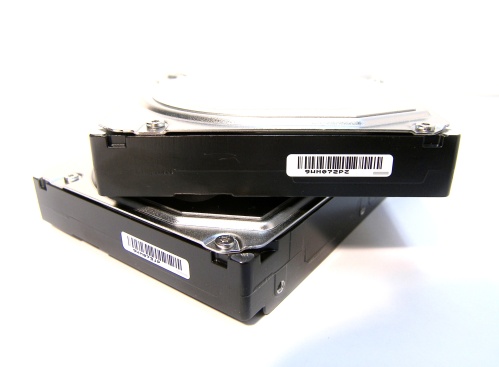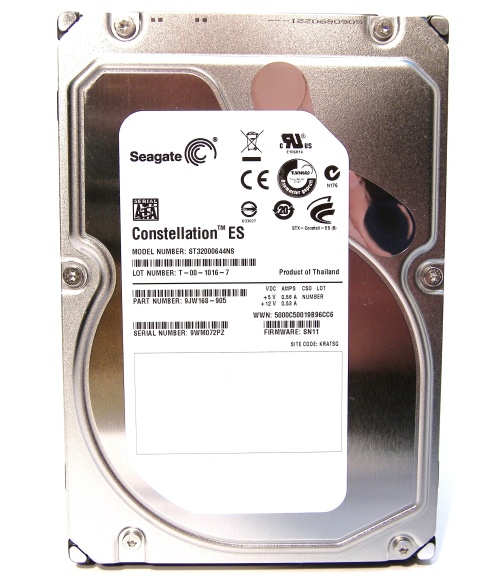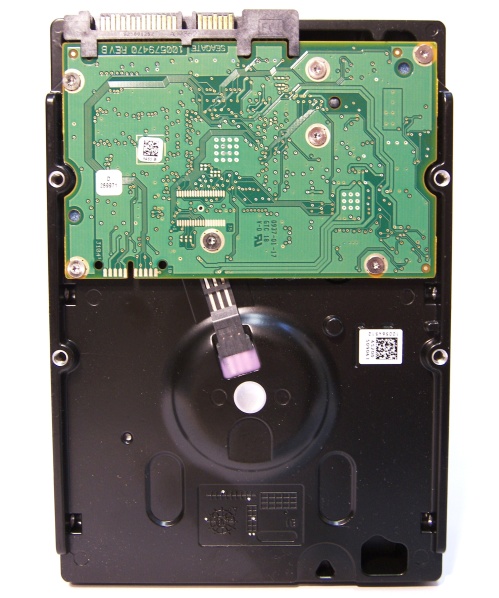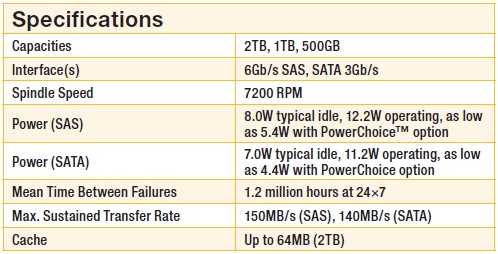Index


Review: Most reliable enterprise-grade drives on the market
Over
the past three decades, Seagate Technology has held a
tenured position in the industry for being accredited with high-performance
digital storage solutions in a large variety of consumer markets. From the mainstream
end-user to the hardware enthusiasts to the enterprise and professional
marketplace, Seagate has provided an abundance of product offerings across the
entire spectrum.
During these past thirty years in the world of
computing, magnetic storage capacity has increased at an exponential rate. The
emergence of Web 2.0 infrastructure and cloud computing have ushered in a new
era of data reliability for the world’s enterprise data servers and storage
solutions. As the world’s demand for increased storage capacity progresses into
the 2010s, its dependence on company-advertised reliability measures has risen
as well. Seagate is a company that many ardent enthusiasts in the information
technology business regard as having a highly dependable, honest and
trustworthy engineering workforce when it comes to data being stored on their
hard disk platters. Nevertheless, the company has asked many journalists,
including ourselves, to put the validity of these statements to the test and
prove to the enterprise world that its company ethics, product dependency and
engineering innovation have withstood the forces of time since its foundations
in 1979.


The company recently sent us two of its
fourth-generation Constellation
ES 2TB (ST32000644NS) drives designed for high-capacity storage, 24/7 operation and seamless enterprise integration. We have been presented these drives under the presumption that they would provide the most exceptional business-oriented sustainability in precious mission-critical environments similar to those found in HP, Nvidia, Microsoft and Google server storage rooms and database centers. As such, our hypothesis stands that these drives will be one of the most reliable magnetic storage SATA solutions on the market for any system builder or IT professional.
“The need for greater
storage capacity will continue to expand in multiple directions and dimensions,
but there will be an increasing scrutiny of all storage system purchases, with
an eye to decreasing power consumption, footprint, and cost per GB in
unprecedented ways,” said John
Monroe, a research vice
president at Gartner
Inc. “Performance will not be
ignored, but a flexible balance of capacity, cost per GB, power and speed will
become more crucial in fulfilling end-user storage demands at varied price
points.”


Nevertheless, while Seagate has advertised its
fourth-generation Constellation ES series drives to specifically appeal to
enterprise and professional marketplaces, we are inclined to believe that they
also hold a significant appeal to PC hardware enthusiasts who desire a
combination of incredible RAID0 performance at the benefit of having an
abundance of storage capacity. During our tests, we will measure both RAID0 and
RAID1 performance as it applies to performance-demanding customers and reliability-demanding
customers in different respective markets, and we hope to exemplify the
comparative advantage that these drives offer in both categories.
Pricing
and Specifications
While Seagate’s fourth-generation Constellation ES
drives have received a lot of press over the fact that they are the world’s
first 2TB enterprise storage solutions, there is much more be known about the
technology and architectural design behind these drives. “Constellation is a
much bigger deal than the capacity milestone,” noted Pete Steege, Global
Segment Manager at Seagate. We are inclined to agree with him in many respects.
The Seagate Constellation ES drives currently come in three capacities – 500GB,
1TB and 2TB – and are currently shipping in the SATA II 3Gbps interface with a
spindle speed of 7200RPM. We should note that Seagate representatives have told
us that models ST3500514NS (500GB), ST31000524NS (1TB), and ST32000644NS (2TB)
are new to the channel, just released and hard to find, with availability
favored towards reviewers and OEM partners.
The Seagate Constellation ES 500GB, 1TB and 2TB models
that we were able to find in stock are currently priced at $93.99,
$159.00
and $299.73
respectively, making the 2TB SATA model on review priced slightly above the 2TB
Barracuda XT 6Gbps SATA III drive that several news outlets have positively
critiqued these past few months (although the drive offers almost no performance advantage over its 3Gbps competition). In
comparison, Samsung currently prices its EcoGreen
F2 series drives at around $75
for 1TB and $99
for 1.5TB, while Western Digital currently prices its new Caviar Black series
drives at $69 for 500GB, $99 for 1TB and $300 for 2TB. For a more direct
comparison to our Seagate ST32000644NS 2TB drive, Western Digital prices its
enterprise-oriented 2TB RE4 SATA 3Gbps drive (WD2003FYYS)
at around $309.99.
In 2010, these are the prices to expect for 2TB drives sporting 64MB of cache,
proper RAID clustering support and enhanced power management designs for
large-scale server environments.
Seagate has also stated several times that
Serial-Attached-SCSI 6Gbps (SAS 2.0) versions of all three drives are currently
in production, and we can expect availability very soon. In the meantime,
however, this review will focus on SATA 3Gbps performance and should be an
indication that the currently shipping drives are more than sufficient for many
enthusiast users on the market. Model numbers for the SAS 2.0-interfaced drives
include ST3500414SS (500GB), ST31000424SS (1TB) and ST32000444SS (2TB) as well
as three Self-Encrypting Drive (SED) models numbered ST3500415SS (500GB),
ST31000425SS (1TB) and ST32000445SS (2TB).

At the time of the original press announcement, the Constellation ES series was advertised as being the most
power-efficient magnetic storage drive series available on the market. Seagate
engineers went to work on a highly-efficient power saving feature dubbed
PowerChoice which “decreases power consumption by up to 54-percent for record
power savings in enterprise environments.” According to the product
specifications for the SATA interfaced drives, the PowerChoice feature is
capable of reducing overall power consumption from 7.0W idle down to around
4.4W idle. In comparison, the SAS-interfaced drives are advertised to run as
low as 5.4W with the PowerChoice option.
